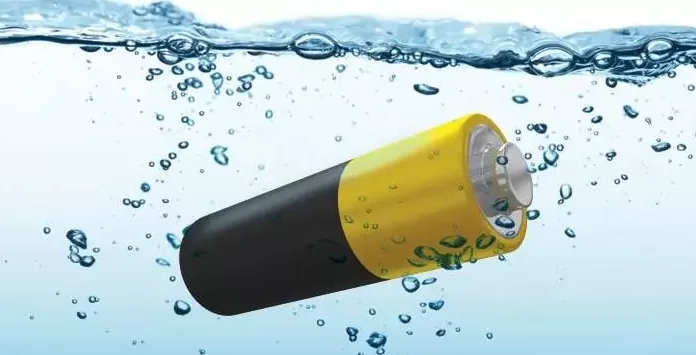Scientists at Texas A&M University are working with metal-free battery electrodes, and have found that the difference in energy storage capacity is up to 1,000%.
How do water batteries work?
In the scientists’ article published in Nature Materials, water- or aqueous-based batteries consist of a cathode (the negatively charged electrode); anode (an electrode with a positive charge); and electrolytes, like conventional batteries.
But in this water-based battery, the cathodes and anodes are polymers that can store energy, and the electrolyte is water mixed with organic salts.
The electrolyte transports ions (charge-carrying particles) back and forth between the cathode and the anode, and the electrolyte is also key to storing energy through its interactions with the electrode.
Professor of Chemical Engineering and co-author Dr. Judy Lutkinhaus says:
- If an electrode swells too much during cycling, it can’t conduct the electrons well, and loses all performance.
- I believe there is about a 1000% difference in energy storage capacity depending on electrolyte choice due to swell effects.
According to their role, the electrodes — “redox-active unconjugated radical polymers” — are promising candidates for water-based batteries due to the polymers’ high discharge potential and fast redox kinetics.
However, the researchers state in their work summary that:
- [L]Little is known regarding the energy storage mechanism of these polymers in an aqueous environment. The reaction itself is complex and difficult to solve because of the simultaneous transfer of electrons, ions, and water molecules.
What is the future of water batteries
The researchers suggest that water-based batteries may be able to mitigate potential shortages of metals such as cobalt and lithium.
… as well as eliminating the possibility of battery fires.
doctor. Jodie Lutkenhaus also says:
- There will be no more battery fires because it is water based.
- In the future, if material shortages are a reality, the cost of lithium-ion batteries will skyrocket. If we had this battery as a replacement, we could use that chemistry, the supply is more stable because we can make it in the US and the materials to make it here.
The researchers also ran computer simulations and analyses, and will run more simulations to better understand the theory.
Assistant Professor of Chemistry and co-author Dr. Daniel Tabor said:
With this new energy storage technology, this is a push towards lithium-free batteries.
We have a better picture at the molecular level of what makes some battery electrodes work better than others, and that gives us a strong clue as to where to go in materials design.

“Writer. Analyst. Avid travel maven. Devoted twitter guru. Unapologetic pop culture expert. General zombie enthusiast.”

